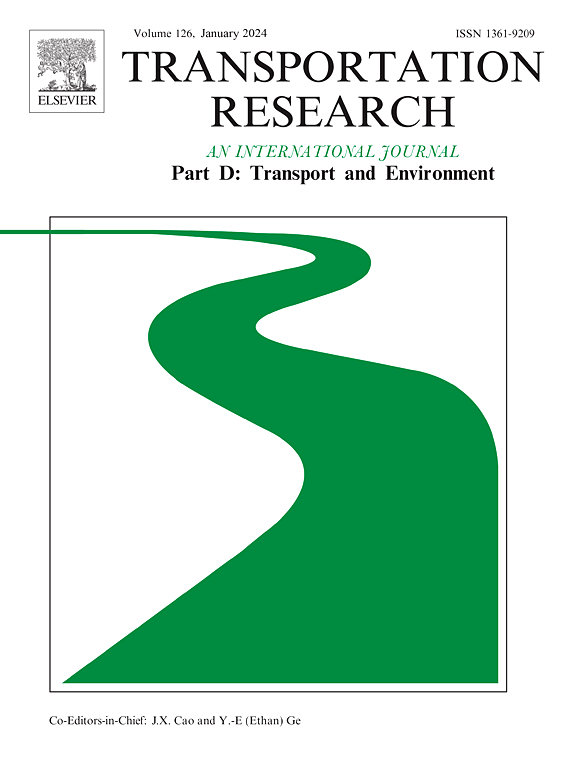基于中观交通模拟预测微观污染物排放的深度学习方法
IF 7.3
1区 工程技术
Q1 ENVIRONMENTAL STUDIES
Transportation Research Part D-transport and Environment
Pub Date : 2025-06-04
DOI:10.1016/j.trd.2025.104791
引用次数: 0
摘要
主要由车辆排放造成的城市空气污染,仍然是欧洲主要城市努力达到空气质量标准的一个主要问题。传统的交通和排放模式在大型城市环境中面临挑战。宏观模型由于其总体方法,往往低估了排放量,而微观模型虽然准确,但需要大量的数据和计算资源。本研究介绍了一种新的方法,通过基于深度学习技术生成车辆速度曲线,将中观交通模型与微观排放模型耦合在一起。深度学习组件从介观模型输出中产生瞬时速度剖面,这对于使用微观发射模型进行精确发射估计至关重要。该方法通过捕获局部排放峰值,提高了道路交通排放估计的准确性和粒度。该方法应用于拥有1200多万人口的Île-de-France地区,在保持高精度的同时展示了其可扩展性,为管理城市空气质量提供了强大的工具。本文章由计算机程序翻译,如有差异,请以英文原文为准。
Deep learning approach to predict microscopic pollutant emissions from mesoscopic traffic simulations
Urban air pollution, primarily driven by vehicular emissions, remains a major concern for major European cities striving to meet air quality standards. Traditional traffic and emission models face challenges in large urban environments. Macroscopic models, due to their aggregate approach, often underestimate emissions, while microscopic models, although accurate, require extensive data and computational resources. This research introduces a novel methodology that couples a mesoscopic traffic model with a microscopic emission model by generating vehicle speed profiles based on deep learning techniques. The deep learning component produces instantaneous speed profiles from mesoscopic model outputs, which are essential for precise emission estimation using microscopic emission models. This approach improves the accuracy and granularity of road traffic emission estimation, capturing local emission peaks. Applied to the Île-de-France region, home to over 12 million people, the method demonstrates its scalability while maintaining high precision, providing a robust tool for managing urban air quality.
求助全文
通过发布文献求助,成功后即可免费获取论文全文。
去求助
来源期刊
CiteScore
14.40
自引率
9.20%
发文量
314
审稿时长
39 days
期刊介绍:
Transportation Research Part D: Transport and Environment focuses on original research exploring the environmental impacts of transportation, policy responses to these impacts, and their implications for transportation system design, planning, and management. The journal comprehensively covers the interaction between transportation and the environment, ranging from local effects on specific geographical areas to global implications such as natural resource depletion and atmospheric pollution.
We welcome research papers across all transportation modes, including maritime, air, and land transportation, assessing their environmental impacts broadly. Papers addressing both mobile aspects and transportation infrastructure are considered. The journal prioritizes empirical findings and policy responses of regulatory, planning, technical, or fiscal nature. Articles are policy-driven, accessible, and applicable to readers from diverse disciplines, emphasizing relevance and practicality. We encourage interdisciplinary submissions and welcome contributions from economically developing and advanced countries alike, reflecting our international orientation.

 求助内容:
求助内容: 应助结果提醒方式:
应助结果提醒方式:


